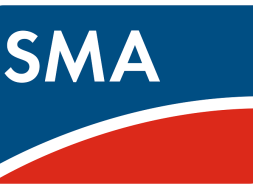
Solar Off-Grid Gains Importance As More People Miss Access To Electricity Than Pre-COVID, Claims New World Bank & GOGLA Report – EQ Mag Pro
-
Currently people with access to off-grid solar solutions globally went up to 490 million at the end of 2021
-
It comprises 70 million having secured access between 2019 and 2021, despite the challenges related to the pandemic
-
The industry expanded its total investments to $2.3 billion by 2021 though most of it was accumulated by 7 companies that operate at scale
-
More public funding and PAYGo options are required to increase the access to more people as still 733 million lack access to electricity globally
Global count of people accessing energy through off-grid solar solutions grew to 490 million at the end of 2021, including 70 million having gained access between 2019 and 2021, yet 733 million are to secure this access and the number of people likely to be without electricity has gone up by 10 million compared to pre-COVID-19 levels.

This data appears in the report Off-Grid Solar Market Trends Report 2022: State of The Sector. It is published by the World Bank’s Lighting Global, the International Finance Corporation (IFC), Global Off-Grid Lighting Association (GOGLA), Efficiency for Access Coalition and Open Capital Advisors.
While the good news is that off-grid solar industry showed its resilience in the face of the pandemic and it supports over 370,000 green jobs, its affordability exacerbated with declining income levels due to the pandemic. Rural homes and businesses make up the majority of off-grid solar customers. However, companies are now also targeting a sizeable urban or weak grid markets.
More than 10.5 million businesses are now using SEKs to increase their income and productivity. Governments and development partners too recognize its potential to power agriculture, enterprise and healthcare. Technologies as solar water pumps (SWP) and solar cooling have now reached near-to-market stage, having gone up from ‘emerging’ stage.
In terms of investments of $2.3 billion raised by the off-grid solar sector between 2012 and 2021, mostly it has been through debt, equity and grants. Maximum went to East Africa. Most of the finance was accumulated by 7 companies operating at scale while those in their seed and start-up phase struggle to secure funding. The report writers expect 2022 to be a ‘record breaking year’.
“Off-grid solar technologies are recognized as essential tools in the fight to eliminate energy poverty and achieve a faster, more equitable clean energy transition,” said Head of Policy and Regional Strategy, GOGLA, Patrick Tonui.
According to the report writers, a lot of people are still unable to own a tier I solar energy kit (SEK) namely solar lanterns, multi-light kits and solar home systems (SHS). With no consumer financing options as pay-as-you-go (PAYGo), these systems remain out of reach. Hence of the 70 million that gained access, most people got tier 2 level.
The increase in numbers is attributed by the report to continued sales, longer lifespan of larger products and current customers moving up the ‘clean energy staircase’ as they have been able to purchase better products and services.
In 2020, 733 million still had no access to electricity and more than 80% of this population lived in rural areas. Even as this number has been on the decline since 2013, the authors caution that the ‘current rate of progress would still take at least 17 years to reach everyone with tier I clean and modern electricity’. The progress towards universal access is lagging with 77% of it existing in Sub-Saharan Africa.
Nonetheless, off-grid solar technologies are expected to be the dominant technology and the most cost-effective, feasible solution to electrify 55% of currently unconnected households in the next 5 years.
As per the report, more options for consumer financing including PAYGo are key to expanding access to SEKs and other productive use appliances. “PAYGo everything’ is here,” state the writers. “The PAYGo technology that unlocked consumer financing for solar energy is now being leveraged on a variety of electronic devices, and to offer digital financial services.”
Additionally, more public funding is needed to reach remote and lower-income customers.
“Governments and the global community must scale up efforts and funding for these clean, reliable, lowest-cost solutions to support those who would otherwise be left behind. There is still time to achieve SDG7, but we must act now,” added ESMAP Lighting Global’s Practice Manager, Gabriela Azuela.
In a recent solar mini grid report, the World Bank said these can power 490 million by 2030 at $0.20 per kWh


















